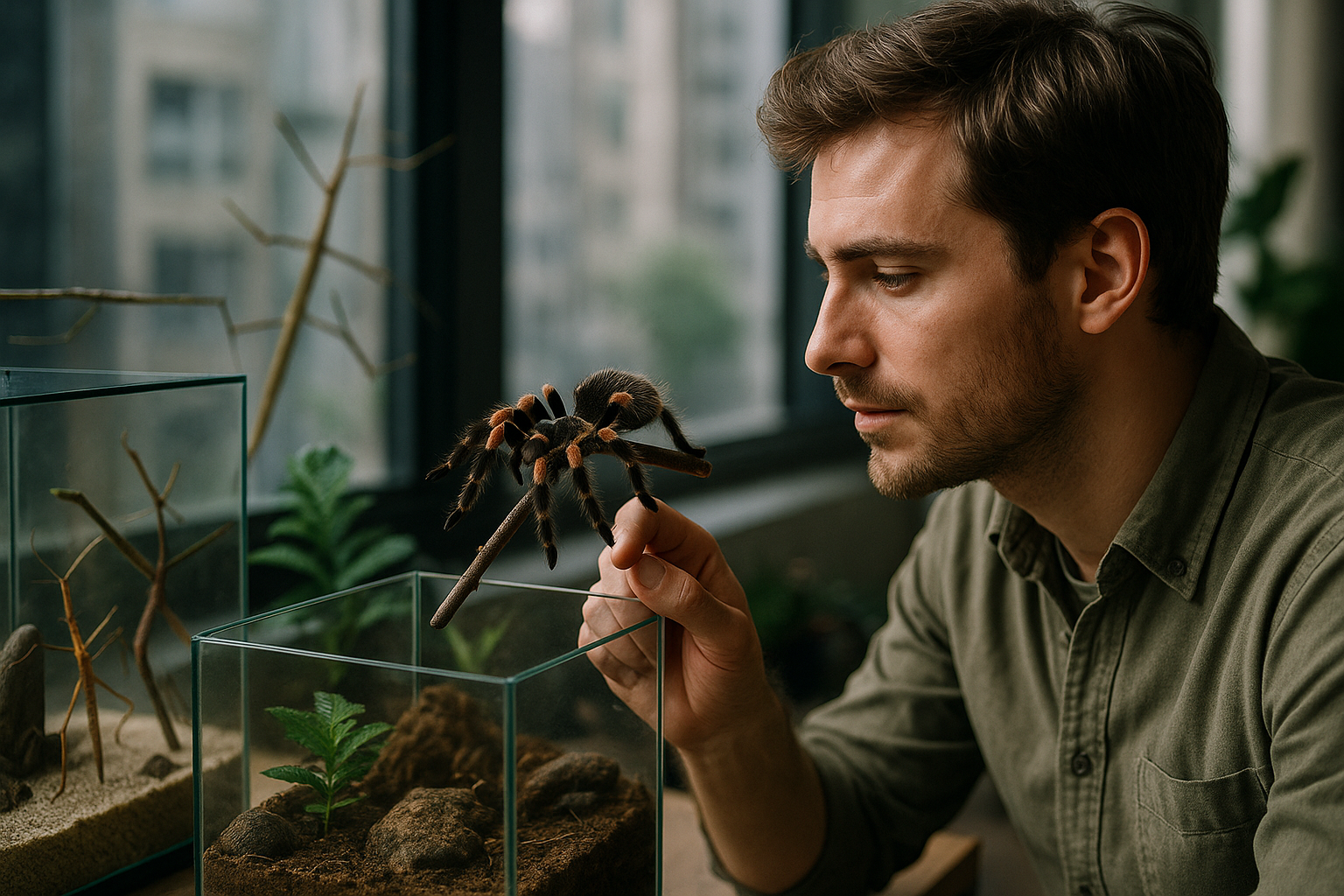Exploring the Fascinating World of Insect Pets: An Emerging Trend
Insects have long been overlooked in the pet industry, dismissed as pests or nuisances. However, the trend of keeping insects as pets is gaining traction, transforming the perspective of people towards these small creatures. From beetles and ants to stick insects and tarantulas, these critters are becoming increasingly popular among animal enthusiasts for their unique characteristics, low maintenance needs, and the opportunity they offer for observing fascinating natural behaviors.

The Historic Context: From Pests to Pets
Historically, insects have not been considered traditional pets. They were frequently viewed as pests rather than companions. This perception began to shift in the mid-20th century when people started keeping ants in glass formicariums, or “ant farms,” a trend which fascinated both children and adults. Over time, this curiosity expanded to other insect species, fostering an appreciation for their ecological role and intrinsic beauty.
Current Trends and Updates: The Buzz Around Insect Pets
The rise in popularity of insect pets has been driven by several factors. Urban dwellers with limited living space find these low-maintenance pets ideal, as they require less room than dogs or cats. Additionally, the insect pet market has seen the introduction of numerous innovative products, such as temperature-controlled habitats and specially formulated diets, contributing to their ease of care. The estimated price range for insect pets is quite affordable, with most costing between $10 and $50. The market’s impact is significant, with the insect pet industry expected to grow exponentially in the coming years.
Unveiling the Science: Research Insights into Insect Pets
Scientific studies back the benefits of keeping insects as pets. Research indicates that observing insects can have a calming effect, potentially reducing stress and anxiety. Additionally, insects can serve as educational tools, providing valuable lessons about life cycles, ecology, and evolution. Insect pets can also help overcome fear and misconceptions about these creatures, promoting a broader understanding and respect for biodiversity.
Balancing Depth with Accessibility: Making Insect Care Understandable
While insects may seem alien and intimidating to some, understanding their care requirements is surprisingly straightforward. Each insect species has specific needs related to diet, temperature, and habitat, which can usually be met with simple equipment and a little research. For example, stick insects thrive on a diet of fresh leaves, while tarantulas require a small enclosure with a controlled climate. By demystifying insect care, we can make these fascinating pets accessible to a broader audience.
In conclusion, the world of insect pets offers a unique and rewarding experience. These tiny creatures, with their diverse forms and behaviors, provide a window into the complex fabric of life on Earth. As this trend continues to gain momentum, it is certain to reshape the pet industry and our relationships with these often misunderstood members of the animal kingdom.





